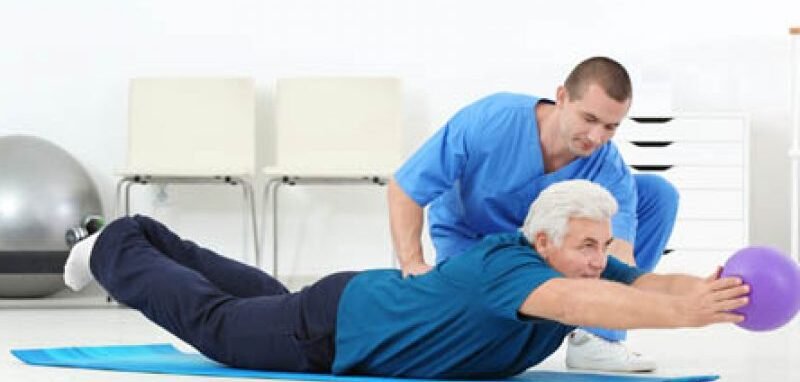Ligaments, discs, and joints lack blood supply (avascular). The only way they get nutrients in and eliminate waste is through motion. The motion must be specific to affect the disc. The pivot point must be no larger than the center (nucleus) of the disc.This is why balls, boards, and inflatable cushions will not improve disc conditions as effectively as the wobbling chair.
In order for this to work with maximum effectiveness the motion must be done slowly enough for the disc to take in (imbibe) fluids and nutrients.
Moving your spine in the wobble chair stimulates the circulation of cerebral-spinal fluid (CSF), which surrounds your brain and spinal cord. This fluid carries nutrients, neurotransmitters and hormones that your brain and nerves need to be healthy. When these are circulated and refreshed by movement you will have a better mood and longer attention span. You will also find that your memory, focus, and cognitive function improve.
4 stages of rehabilitation for sports injuries
The 4 stages of rehabilitation for sports injuries serve as a roadmap to recovery, starting with the acute phase. This initial stage focuses on pain management and swelling reduction through methods like rest, ice, compression, and elevation (RICE). It’s crucial during this time to resist pushing through discomfort; early healing is foundational to regain full function without risking further damage.
As athletes transition into the second stage—rehabilitation—they engage in tailored physical therapy exercises designed to restore strength and flexibility. Here, education plays a pivotal role; understanding biomechanics can help athletes avoid compensatory patterns that lead to future injuries. The third stage emphasizes sport-specific training, where strength gains are integrated into functional movements relevant to their sport. Finally, the fourth stage involves reconditioning and gradual return-to-play protocols that not only assess fitness levels but also build mental resilience. Together, these stages guide athletes from injury back to peak performance while emphasizing proactive measures for long-term health.
Exercise Rehabilitation
How soon can I start rehabilitation?
Rehabilitation exercises should commence shortly after the initial inflammatory phase, typically around 72 hours post-injury. It’s crucial that these exercises are performed pain-free, as pain serves as a vital indicator from your body prompting you to slow down or stop. The age-old adage no pain, no gain can often mislead athletes into pushing through discomfort, which can impede the healing process instead of aiding it. Listening to your body’s signals is paramount; failure to do so may result in prolonged recovery times and potential setbacks.
In certain scenarios—like specific tendinopathy protocols for Achilles or patella tendon injuries—some controlled discomfort may be acceptable under professional guidance. However, this approach should never be taken lightly without consulting a trained medical expert who understands the intricacies of rehabilitation. Understanding the rationale behind prescribed treatment regimens not only fosters compliance but also empowers athletes by aligning their mental engagement with physical healing strategies. In Frisco’s infinity wellness center, experts emphasize that informed recovery is key to achieving optimal outcomes while preventing future injuries and enhancing overall performance.
